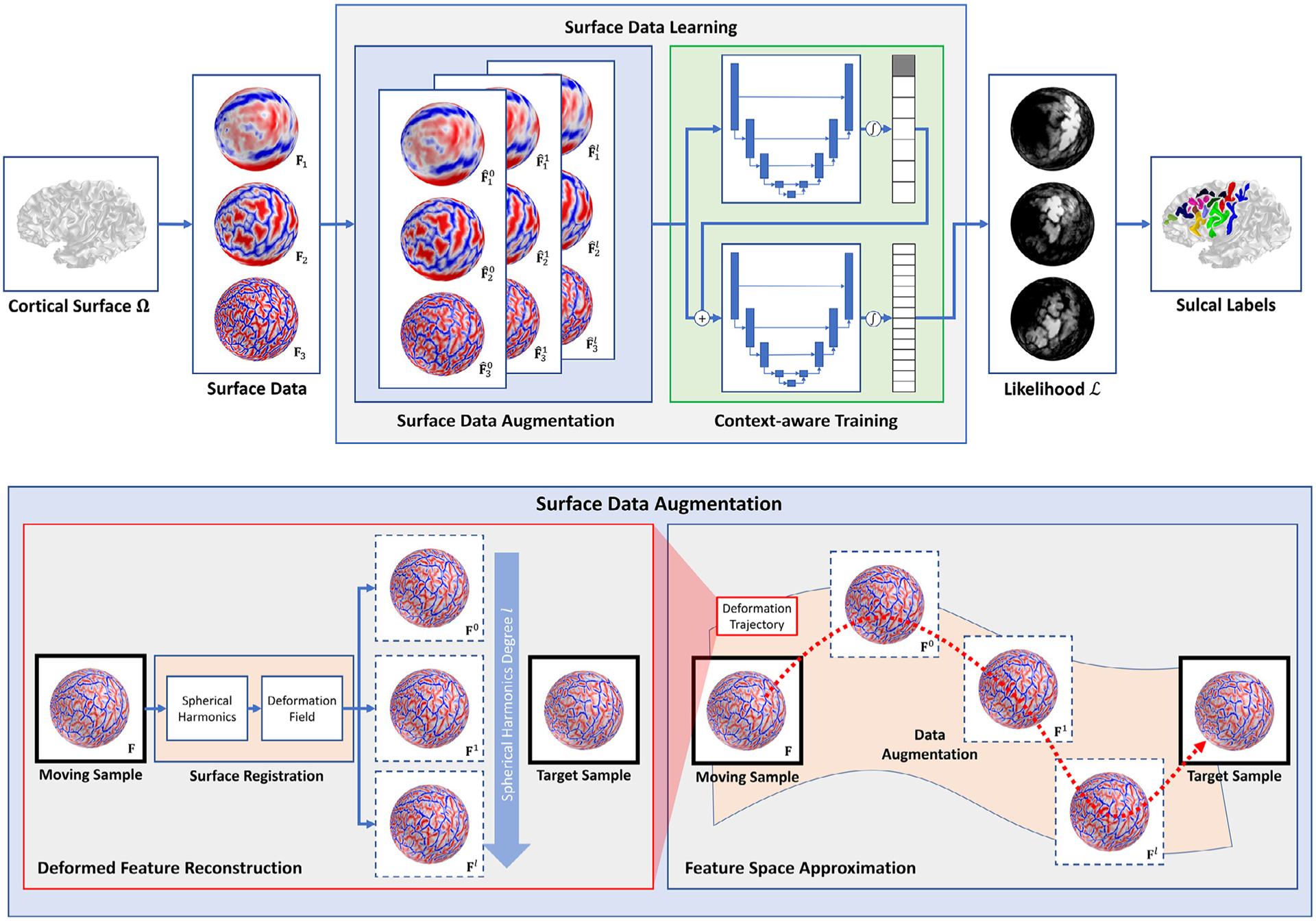Fig. 2.

A schematic overview of the proposed method. Our method consists of two main components in the learning phase: surface data augmentation (blue box) and context-aware training (green box). During data augmentation, we augment training samples (dotted box) by deforming surface data over the sphere via surface registration to every possible pair of training samples. We decompose spherical deformation via the spherical harmonics and reconstruct its intermediate deformation by controlling the basis functions. In this way, a gap can be filled between moving and target samples in the feature space along their deformation trajectory (red). In the context-aware training, spatial information of primary/secondary sulci are inferred to guide labels of tertiary sulci. The information except for the background label (gray node in the output likelihoods) is then fed into the second training stage to offer spatial clues to guide the labeling of tertiary sulci. Note that the sulcal labeling in the test phase does not use registered (deformed) surface data, which allows fast annotation.
